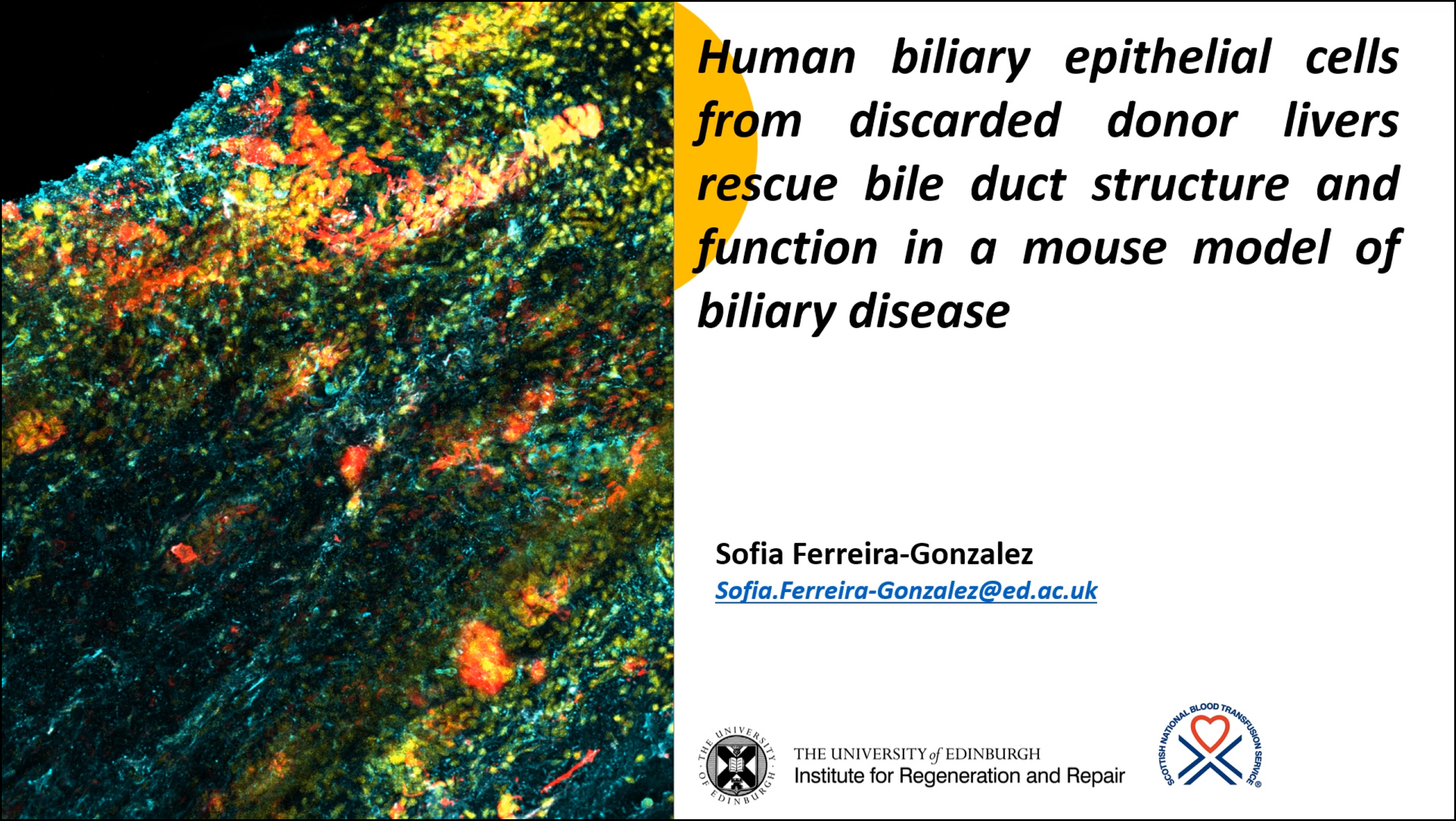Human biliary epithelial cells from discarded donor livers rescue bile duct structure and function in a mouse model of biliary disease
John M Hallett1, Sofia Ferreira-Gonzalez1, Tak Yung Man1, Alastair M Kilpatrick1, Hannah Esser1, Kayleigh Thirlwell2, Mark T Macmillan1, Daniel Rodrigo-Torres1, Benjamin J Dwyer3, Victoria L Gadd1, Candice Ashmore-Harris1, Wei-Yu Lu4, John P Thomson5, Maurits A Jansen6, Eoghan O'Duibhir1, Philip J Starkey Lewis1, Lara Campana1, Rhona E Aird1, Thomas S R Bate7, Alasdair R Fraser2, John D M Campbell2, Gabriel C Oniscu8, David C Hay1, Anthony Callanan7, Stuart J Forbes9
- Centre for Regenerative Medicine, Institute for Regeneration and Repair, University of Edinburgh, 5 Little France Drive, Edinburgh EH16 4UU, UK.
- Tissues, Cells and Advanced Therapeutics Scottish National Blood and Transfusion Service (SNBTS), Research Avenue North, Edinburgh EH14 4BE, UK.
- Centre for Regenerative Medicine, Institute for Regeneration and Repair, University of Edinburgh, 5 Little France Drive, Edinburgh EH16 4UU, UK; Curtin Medical School, Curtin Health Innovation Research Institute, Curtin University, Kent St., Bentley, Perth 6102, Australia.
- Centre for Inflammation Research (CIR), University of Edinburgh, The Queen's Medical Research Institute, 47 Little France Crescent, Edinburgh EH16 4TJ, UK.
- Cancer Research UK Edinburgh Centre, MRC Institute of Genetics and Cancer, University of Edinburgh, Crewe Road, Edinburgh EH4 2XU, UK.
- Centre for Cardiovascular Science, The Queen's Medical Research Institute, University of Edinburgh, 47 Little France Crescent, Edinburgh EH16 4TJ, UK.
- Institute or Bioengineering, School of Engineering, University of Edinburgh, Faraday Building Colin Maclaurin Road, Edinburgh EH9 3DW, UK.
- Edinburgh Transplant Centre, Royal Infirmary of Edinburgh, 51 Little France Crescent, Edinburgh EH16 4SA, UK; University of Edinburgh, 51 Little France Crescent, Edinburgh EH16 4SA, UK.
- Centre for Regenerative Medicine, Institute for Regeneration and Repair, University of Edinburgh, 5 Little France Drive, Edinburgh EH16 4UU, UK. Electronic address: stuart.forbes@ed.ac.uk.
Abstract
Biliary diseases can cause inflammation, fibrosis, bile duct destruction, and eventually liver failure. There are no curative treatments for biliary disease except for liver transplantation. New therapies are urgently required. We have therefore purified human biliary epithelial cells (hBECs) from human livers that were not used for liver transplantation. hBECs were tested as a cell therapy in a mouse model of biliary disease in which the conditional deletion of Mdm2 in cholangiocytes causes senescence, biliary strictures, and fibrosis. hBECs are expandable and phenotypically stable and help restore biliary structure and function, highlighting their regenerative capacity and a potential alternative to liver transplantation for biliary disease.
Presented By Sofia Ferreira-Gonzalez | ORCID iD

